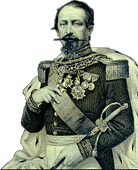|
|
|||||
|
|
|||||
|
|
||||||||||
dispensers and give you ammo. Like ammo, troops always need to be near to take over when your finished or somebody finishes you. Reserves can take the initiative and keep on pounding on the defence, while you refresh and come back. 3.Even with the greatest luck and the best attacks piling onto each other, a good captain and group must always foresee the possibility of disaster. It could happen that the defense of the enemy suddenly gets into a successful offence, it could happen that slack defense leads enemy assault teams into your base. Always be ready to act on this, calling a possible fall back if necessary. When falling back, always fall back onto defensible position. A great room is not a defensible position, a narrow passageway is. Fall back into your own base if necessary and defend a really defensible area. Example: The 2fort(5)-centre court is indefensible when it is under an organized attack. But the entrance rooms are very well defensible. 4.Once the enemy is retreating: pursue and destroy. Do not leave any person alive. An enemy alive is a pair of eyes and a gun in, probably, capable hands. If, in 2fort5, somebody jumps into the water, send a reserve after him. 5.Let the reserve cover the rear of the offensive troops and the defenders the rear of the reserve, in this way you will keep a coherent group, and you will be protected from surprise rear attacks. 6. Always keep something up your sleeve. Do not go out with full force in the beginning of the game unless you are very certain that the enemy is easily beaten. When commencing a battle start to feel out the enemy and try to see weak spots. All great commanders first tried to view the enemy lines to find holes, and weak spots before ordering the full attack. If one of your operatives discovers a weak spot, be it undefended or unexpected by the enemy, then and only then attack in full force. |
